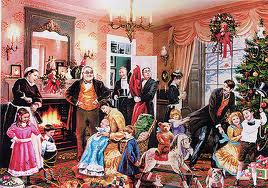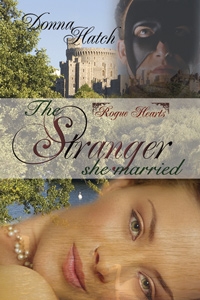Linda Banche here. My guest today is Christy English and her How to Tame a Willful Wife, an updating of Shakespeare's The Taming of the Shrew to Regency England. Here she tells us about her heroine's take on the strictures placed on Regency women, and the connections between Shakespeare's England and the Regency.
Leave a comment with your email address for a chance to win the copy of How to Tame a Willful Wife which Sourcebooks has generously provided. Christy will select the winner. Check the comments to see who won, and how to contact me to claim your book. If I cannot contact the winner within a week of selection, I will award the book to an alternate. Note, Sourcebooks can mail to USA and Canada addresses only.
And the winner is catslady! Congratulations, catslady, and thanks to all who came over.
Christy English:
1. What was proper behavior for women in Regency England, and how doesn't Caroline fit?
Women in Regency England were tied to the men in their lives by chains of adamant. Though widows could and did inherit money on the deaths of their husbands, they were also given guardians to oversee their finances and their lives, as well as the lives of their children.
Caroline Montague, the heroine of my novel, HOW TO TAME A WILLFUL WIFE, is aware of the limits placed on her existence. She just prefers to ignore them.
While she agrees to marry as her father bids her, her acquiescence to an arranged marriage does not change how she chooses to live her life. Raised by her father’s veterans as much as her own parents, Caroline has spent the years of her girlhood learning to fence, to ride astride her war horse, Hercules, to shoot with a bow and to defend herself by throwing knives. Not one of these occupations, save archery, was acceptable for women during the Regency, and her husband begins the long, slow process of taming her, i.e. bringing her back into the fold of what is proper for a lady, and for a countess in the year 1816.
As the story continues, the romance between Anthony and Caroline blossoms, and they learn, in fits and starts, how to live together as equals. Any sense of equality between an earl and his wife would have been considered ludicrous in the Regency period, but fortunately, I am writing for the modern world, where we are all still striving for the ideal of equality.
2. Why did you update Shakespeare to Regency England? What are the connections between the two eras?
Shakespeare’s work lives and breathes in any age, and many of the themes explored in
The Taming of the Shrew, such as power within marriage and who wields it, were as relevant during the Regency period as during the Renaissance.
On paper during both time periods, the man held the power in any relationship. But the human factor must be brought into account, the fact that all men did not wield their legal authority like a sledge hammer, but instead worked to find ways in which they and their wives could live together in harmony, if not equality.
Unlike Katherine and Petrucchio in Shakespeare’s play, Anthony and Caroline find ways of living and working together that do not include starving her into submission. Though
Shrew is a comedy and meant to be taken as such, Petrucchio does keep his wife from sleeping and eating for days at a time in order to make her obey him, indeed, to force her to conclude that whatever he says is true, including whether the sun is the moon, simply because he says it is.
Anthony and Caroline never fall into this level of conflict. Though Anthony strives to make Caroline obey him, he never resorts to the measures Petrucchio adopts in
Shrew. Though a husband had complete authority over his wife in both Renaissance England and Regency England, the world had become a bit more enlightened along the lines of gender by 1816. There was certainly more social pressure, if not legal pressure, to treat a woman as a human being. As we move from Shakespearean England into the Regency, we see that socially, things are getting better for women, though it will take another hundred years and more before the legalities catch up.
HOW TO TAME A WILLFUL WIFE by CHRISTY ENGLISH
How To Tame A Willful Wife:
1. Forbid her from riding astride
2. Hide her dueling sword
3. Burn all her breeches and buy her silk drawers
4. Frisk her for hidden daggers
5. Don't get distracted while frisking her for hidden daggers...
Anthony Carrington, Earl of Ravensbrook, expects a biddable bride. A man of fiery passion tempted by the rigors of war into steely self-control, he demands obedience from his troops and his future wife. Regardless of how fetching she looks in breeches.
Promised to the Earl of Plump Pockets by her impoverished father, Caroline Montague is no simpering miss. She rides a war stallion named Hercules, fights with a blade, and can best most men with both bow and rifle. She finds Anthony autocratic, domineering, and...ridiculously handsome.
It's a duel of wit and wills in this charming retelling of
The Taming of the Shrew. But the question is...who's taming whom?
ABOUT THE AUTHOR
After years of acting in Shakespeare’s plays, Christy English is excited to bring the Bard to Regency England in
How to Tame a Willful Wife , a re-telling of
The Taming of the Shrew. Connect with her at
http://www.christyenglish.com/ and
https://twitter.com/ChristyEnglish
Photo of lady embroidering from the movie
Emma































